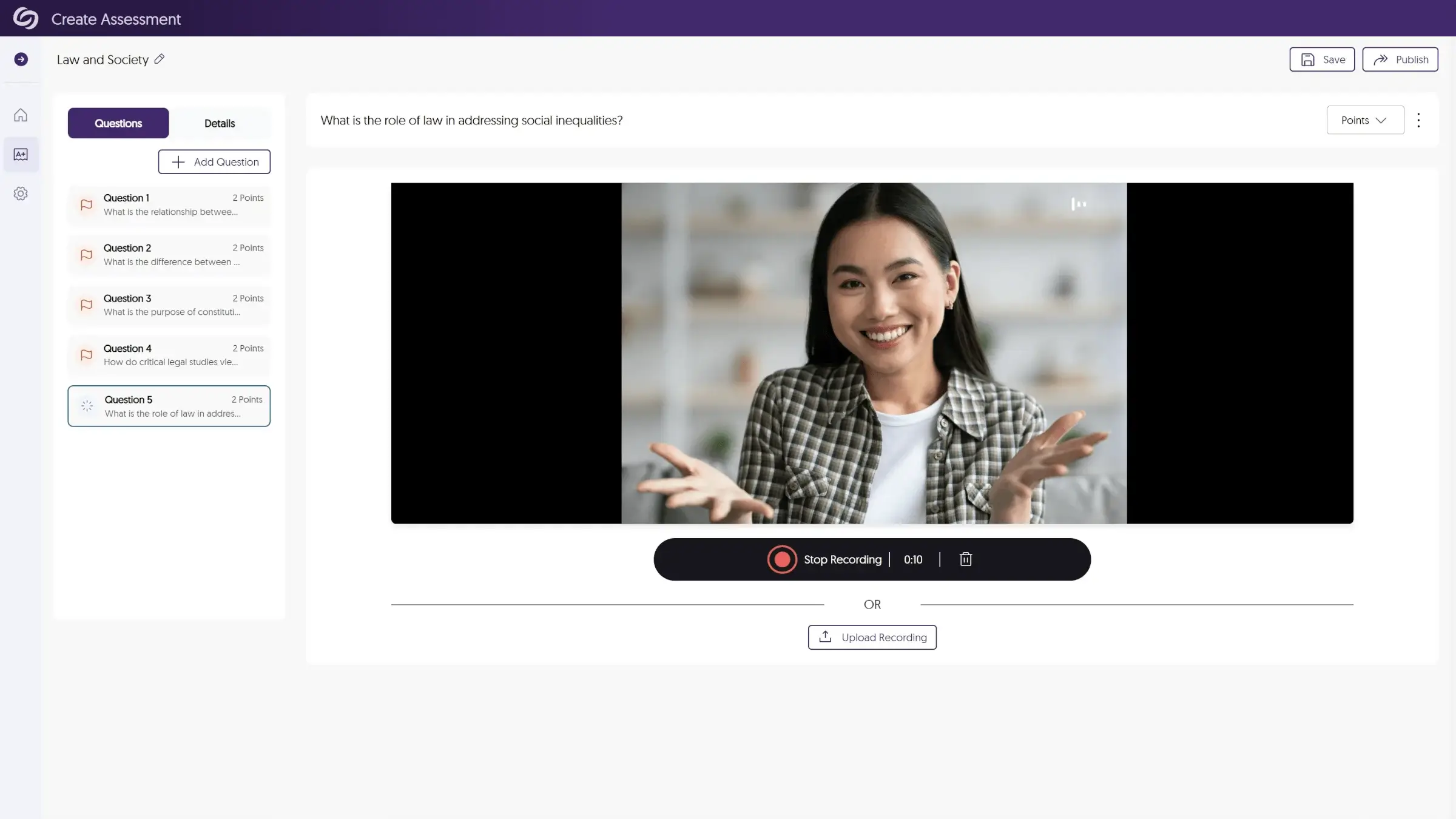Video feedback on student assessments can help create more engaging, effective learning experiences in a variety of ways:
1. It combines visual and auditory feedback: Research shows that students absorb and retain information better when it comes through multiple sensory channels. In fact, combining visual elements with text is 70 percent more memorable than text alone. Video feedback allows instructors to use vocal inflection, facial expressions, and visual cues that don’t translate well in written comments.
2. Video feedback helps create a sense of connection: Video establishes an instructor’s presence when physical distance separates the instructor and learner. When students see and hear their instructor speak directly to them about their work, it creates a sense of personal attention that fosters engagement. This “social presence” has been linked to higher motivation, increased course satisfaction, and better learning outcomes.
3. Video feedback can save time: Contrary to what many educators initially think, video assessment can actually save time compared to traditional written feedback. Speaking naturally about a student’s work often allows instructors to convey more information in less time than typing detailed comments. For example, a two-minute video feedback recording can deliver the equivalent of several paragraphs of written feedback, complete with nuance, context, and personalization.
4. It helps build a culture of continuous improvement: Traditional grading often focuses on justifying a score, while video feedback naturally emphasizes growth and improvement. Feedback becomes a conversation where instructors can explain concepts, suggest approaches, and acknowledge areas they did well or that need improvement. Assessment offers a learning opportunity rather than simply the end of an assignment.
5. Video Makes Feedback More Accessible: For many learners, video feedback is a more accessible alternative to densely written feedback. Additionally, the ability to replay video feedback multiple times helps students process complex suggestions at their own pace, returning to challenging concepts for a better understanding.
By incorporating video assessment and feedback into existing learning management systems, institutions can create more effective feedback processes that better prepare students and professionals for success







